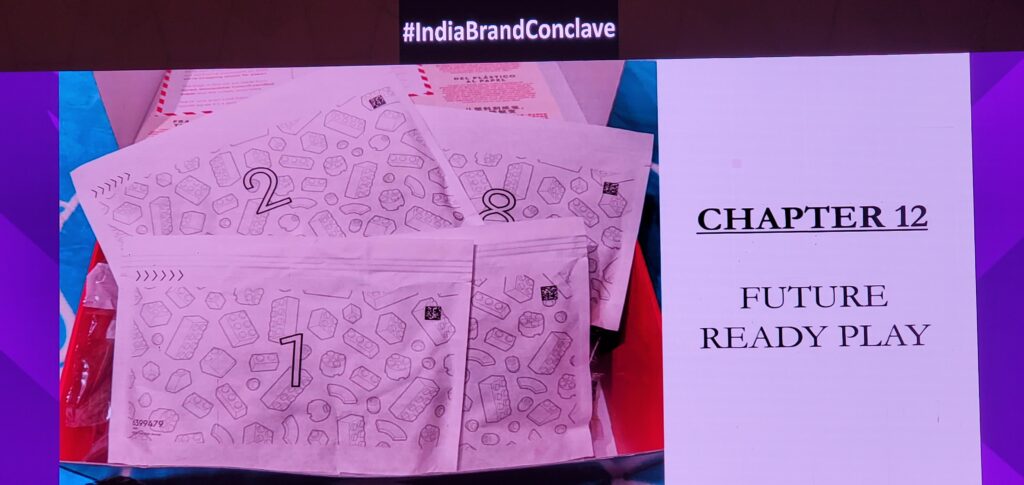FUTURE PURPOSE OF BRANDS
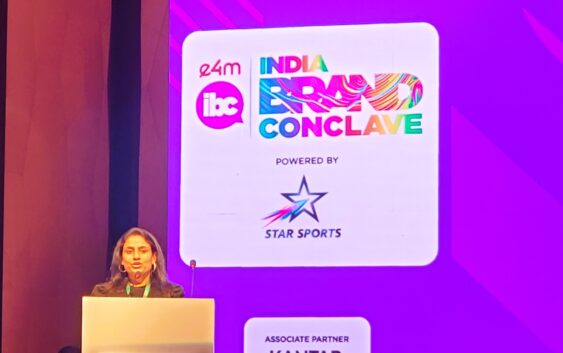
The e4m India Brand Conclave was hosted on February 2nd, 2024, and included an incredible lineup of brand professionals who shared crucial ideas on how to revolutionise the way to approach marketing.

The subject for this session was ‘Building Purpose-Led, Future-Fit Brands’. The goal was to discover how businesses can legitimately inject purpose into their DNA, connect with consumers on a deeper level, and generate long-term value. It emphasises the need of a holistic approach to branding that takes into account not just the present but also the emerging future, in which companies are more than simply goods, but active participants in making a better society.
Purpose-driven companies connect honestly with their target audience by promoting principles that align with social demands. They don’t merely react to change; they actively promote innovation, sustainability, and diversity as core values. Future-fit brands anticipate technological, demographic, and global changes while being adaptable and relevant. They recognise that addressing and positively affecting real-world problems is the road to long-term success.
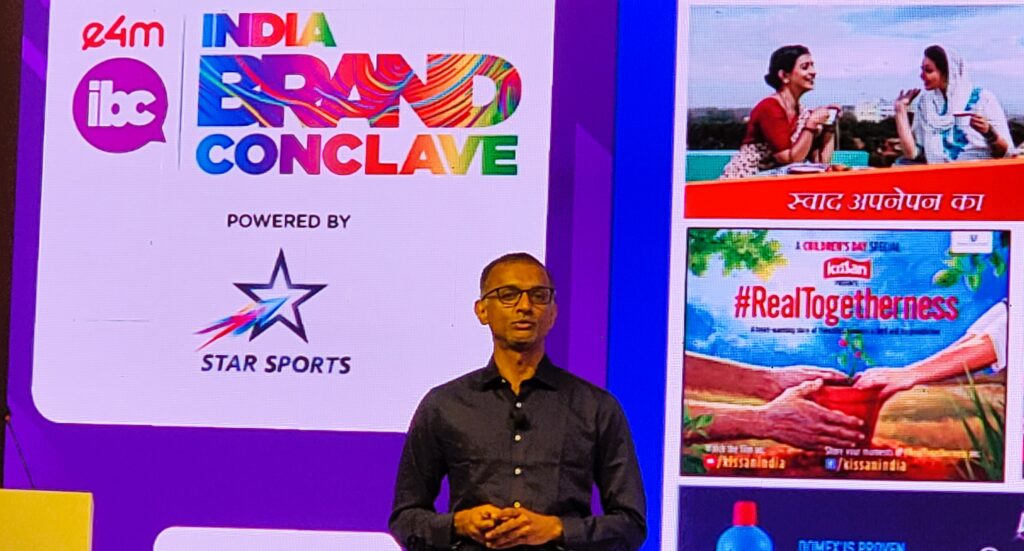
Keynote Session by DEEPAK SUBRAMANIAN, Executive Director: Home Care – Hindustan Unilever Limited on Creating Purposeful Brands: A Practitioner’s Guide, clearly defined, emphasizing “The discussion should shift from marketing to mattering.”
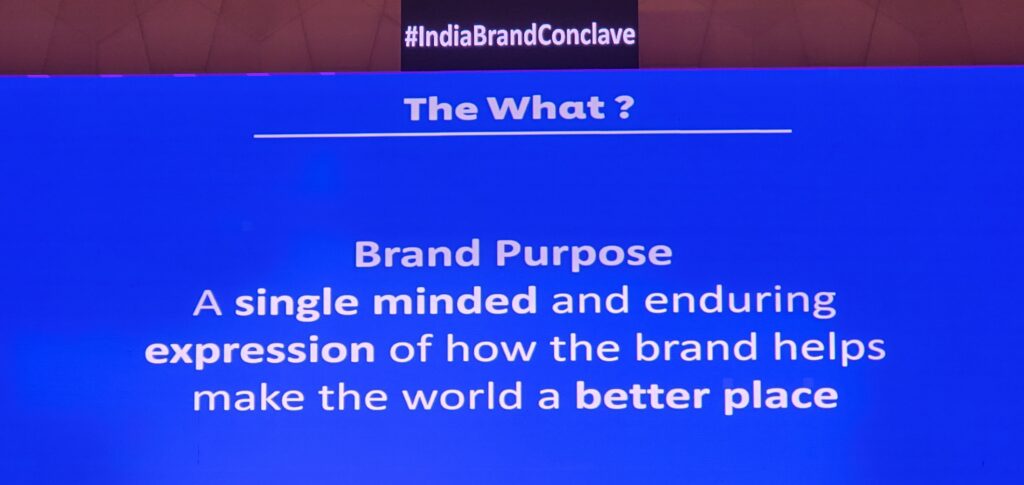
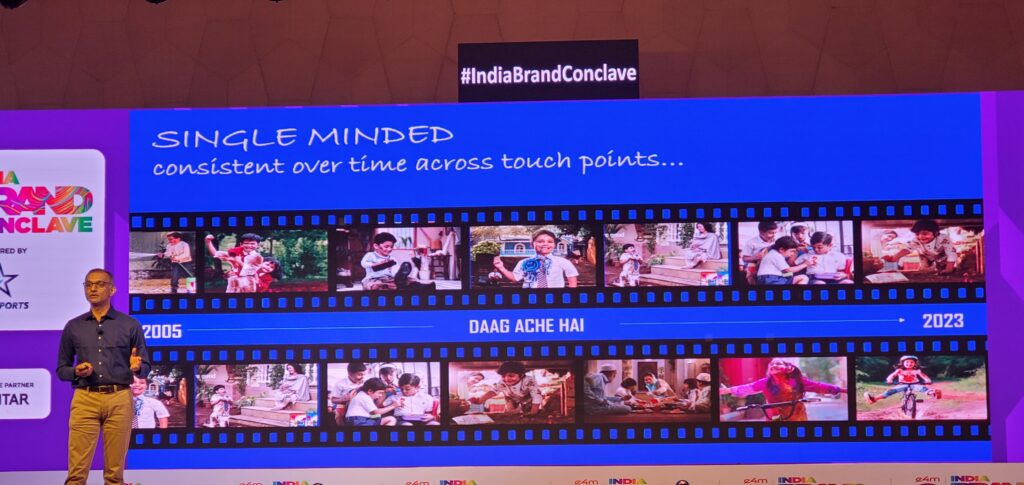
He said as he started his session, “The good news is that there is a lot of material available. You just have to go online and google. There are lots of people who give you expert advice on how to build purposeful brands.”
The bad news, however, is that it is difficult to develop and construct useful brands, and one can only genuinely understand it by doing it, according to Subramanian. In terms of what brand purpose entails, he defined it as a single-minded and enduring representation of how the brand contributes to the betterment of the world.
He went on to say that single-mindedness refers to one persistent notion that remains consistent throughout time and across touchpoints. “Sounds easy, but it’s extremely difficult,” Subramanian said. He used the example of Surf Excel’s “Daag Acche Hain” campaign, which began in 2004. “We’re now in 2024, yet the same thought still goes on.”
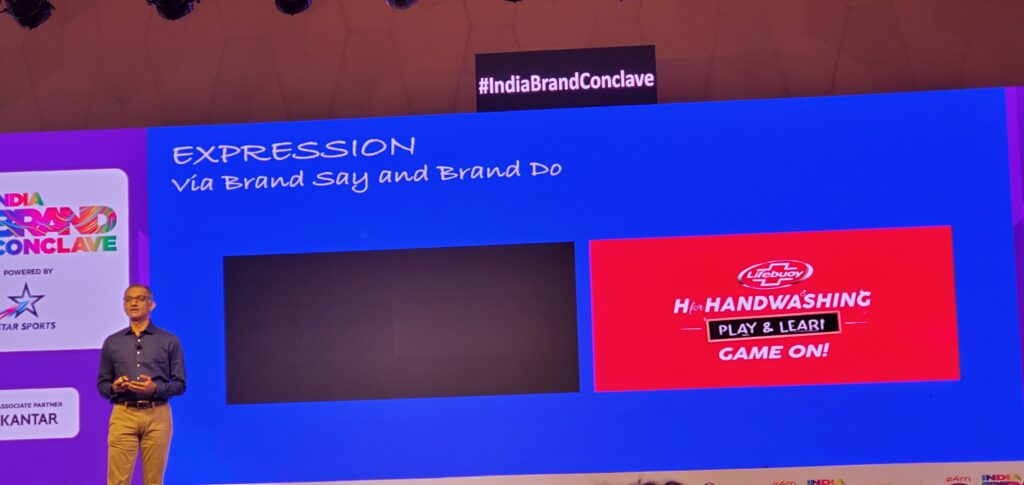
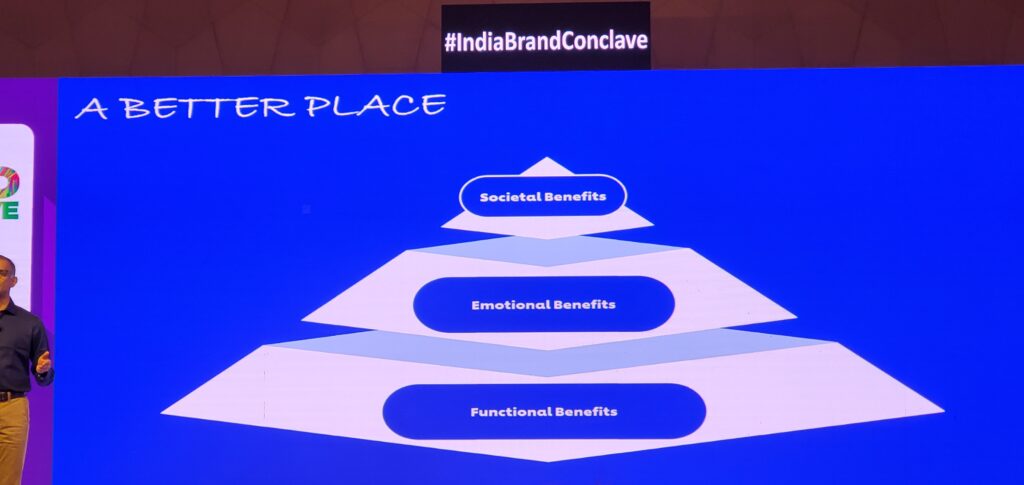
HUL follows a thought, Subramanian shared, of a ‘brand say’ and a ‘brand do’. “A brand which has an inspiring, enduring purpose should be able to activate its thought. And if you can’t do that as a simple but practical thought, that means your purpose is not probably sharp enough,” he added.
Subramanian then discussed the need of making the world a better place, pointing out that any brand may provide a variety of advantages, including utilitarian, emotional, and social. “Most brands tend to operate in the zone of functional and emotional benefits. To stand out from the clutter and turn a normal brand into a purposeful brand, it needs to elevate the discussion and attach itself to big social themes or big environmental themes,” he explained. According to Subramanian, one practical idea that has worked for him is to look at the United Nations’ 17 Sustainable Development Goals. “You look at the SDGs and look at your brand purpose, to see if it fits one of those 17,” he went on to say.
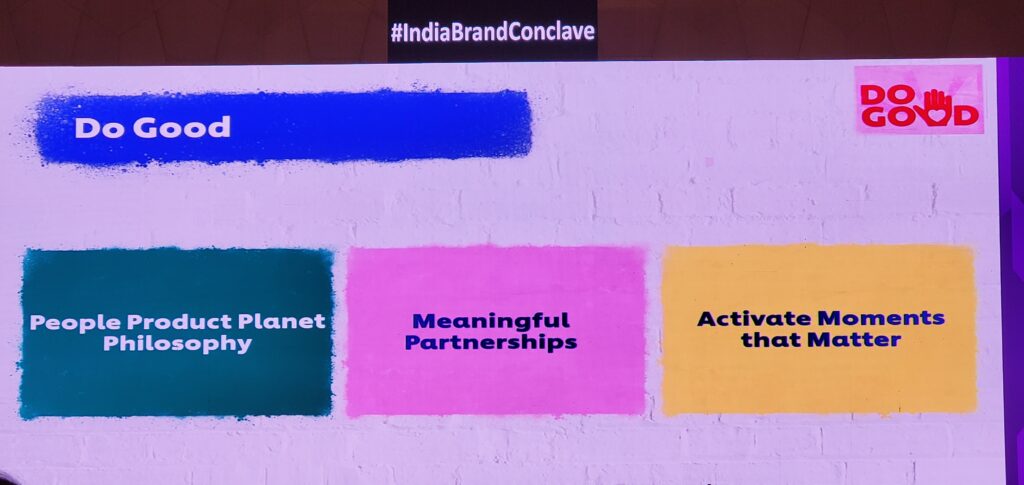
He also warned firms against slipping into the trap of running solely on lofty societal advantages if they can’t connect their brand mission to their product truth. Getting genuine is all about knowing the consumer’s life, including how they use data. Subramanian described how there is a large data lake. “There’s this saying now, data data everywhere, not a drop to drink. Stitching it together requires lots of processes, tools and experience,” with the other aspect of getting real is context immersion, he added.
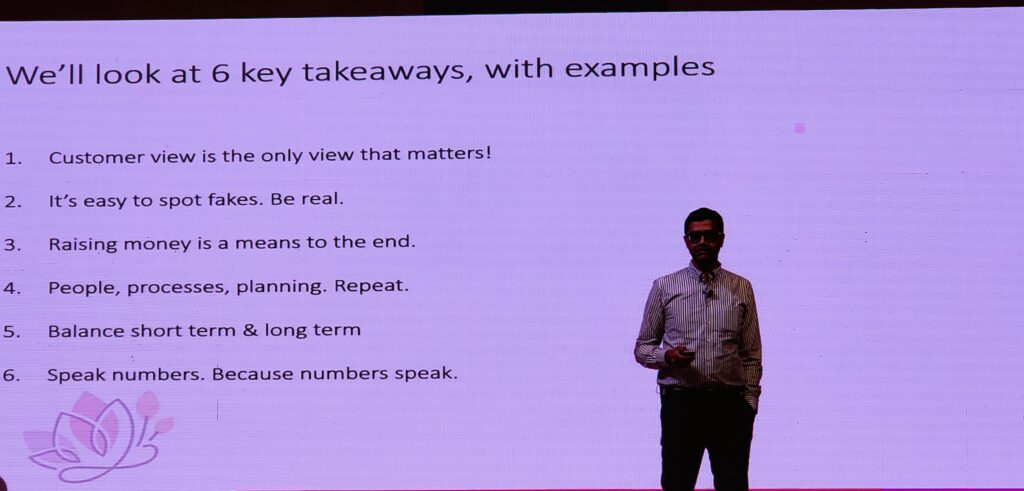
The spotlight session wth SHANKAR PRASAD, Founder & CEO- Plum, the topic being From Concept to Cart: Lessons Learned in Building Plum, he said
“One has to listen to the consumers.”
Shankar provided an overview of an entrepreneur’s perspective on what it takes to develop a firm, as well as a brand. Prasad refers to himself as a self-taught marketer because he has never had a formal marketing degree, but his knowledge has come from common-sense experiences throughout time.
Plum focuses on six essential lessons.
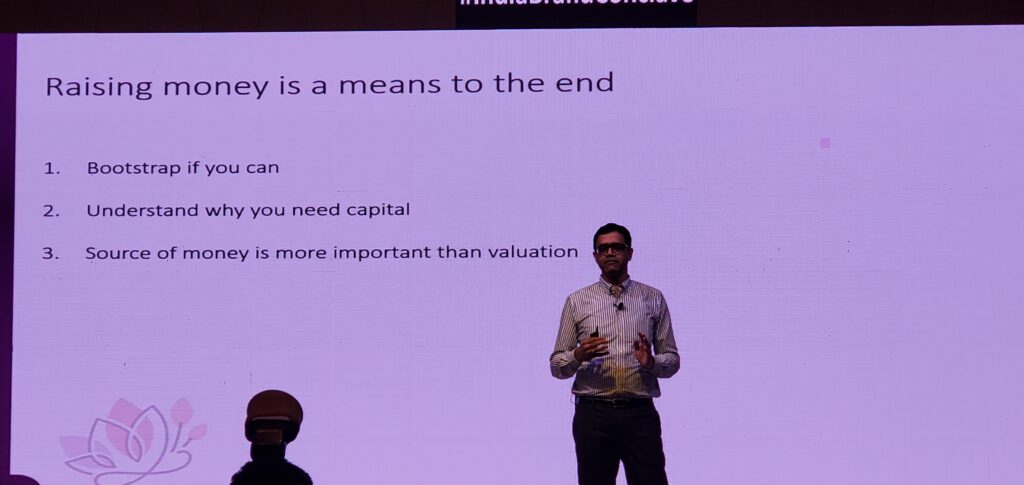
Raising money is a means to the end and not the end
It is critical to focus on the client, create something of value, and then consider growing it, rather than the other way around. Prasad recommends bootstrapping if and for as long as possible, followed by raising financing from the proper sources that support your brand’s method of doing business.
Prasad said, “It’s also necessary to understand why a brand needs capital in the first place and how much money is needed. Make sure you raise only as much as you need and you put it to use only for the purpose you intended to raise it for.”
It’s easy to spot fakes, so be real
Prasad emphasised that when other businesses claim 4x more brighter skin tone or that 99% of people agree with this product, as a marketer, you may get FOMO and be tempted to say big bombastic things, but this is when you should recognise what truly matters to customers. This is when you start to question if something is genuine or not.
Even now, customer service emails are CC’d to Prasad, and when someone wonders where their item is, he is delighted to assist. “Even a single customer today matters to me and I make sure their query is closed. That ethos has stayed from day one,” he added.
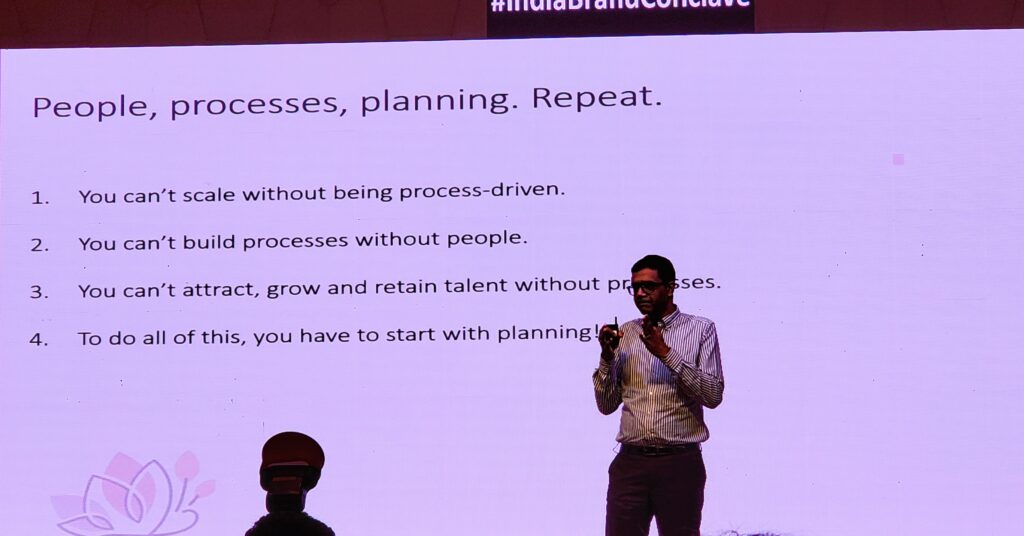
People, process, planning, repeat is the way to go forward
One cannot scale without being process-driven, thus the people, process, and planning cycle is more of a circular one.
“If you move forward without the processes being in place, you are for sure going to be slowed down at some point,” the Plum executive added.
Furthermore, procedures cannot be built without people, and no brand can recruit, grow, or retain talent without processes.
“In the end to do this circular loop, you have to have a plan in place,” said Prasad.
Customer view is the only view that matters
Plum began selling Kajal pencils with sharpeners, but customers complained that they couldn’t use the kajal past the initial bit of the pencil tip since the sharpener wasn’t powerful enough. The sharpener was unable to scale off the PVC barrel because of its hardness.
“We launched a great kajal but we didn’t have a great sharpener. So, when we launched the right sharpener, the sales of the kajal took off. To this date, we give a free sharpener with the kajal because we know no other sharpener works with it,” Prasad added.
“By referring to another brand’s playbook a brand can’t chop the tail off. Because a large section of consumers gets chopped off too. One has to listen to their consumers,” he explained.
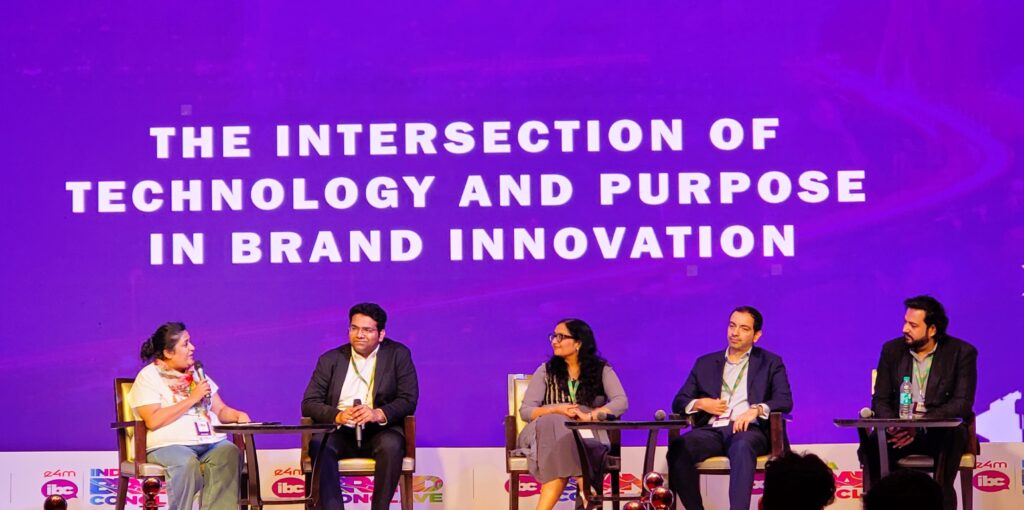
At thw panel discussion – The Intersection of Technology and Purpose in Brand Innovation, the discussion was on how in today’s world, a brand’s mission is critical to making an impression on a consumer’s mind. Purpose-driven marketing has become a buzzword, but it remains one of the most effective marketing methods. While technology advances on a daily basis, the concept of purpose also changes. At the e4m India Brand Conclave, professionals discussed the junction between purpose and technology.
The panelists were ANUJA TRIVEDI – Chief Marketing Officer of Shemaroo Entertainment Ltd, ANIRUDH SINGLA – Founder & CEO of PepperContent, ROHAN MANGLANI – Head of Marketing – Brand Strategy and Implementation at Fast&up, ROHIT TALWAR – Vice President and Head of Marketing at Castrol India Limited and the session chair: CHAAYA BARADHWAAJ Founder & MD of BC Webwise.
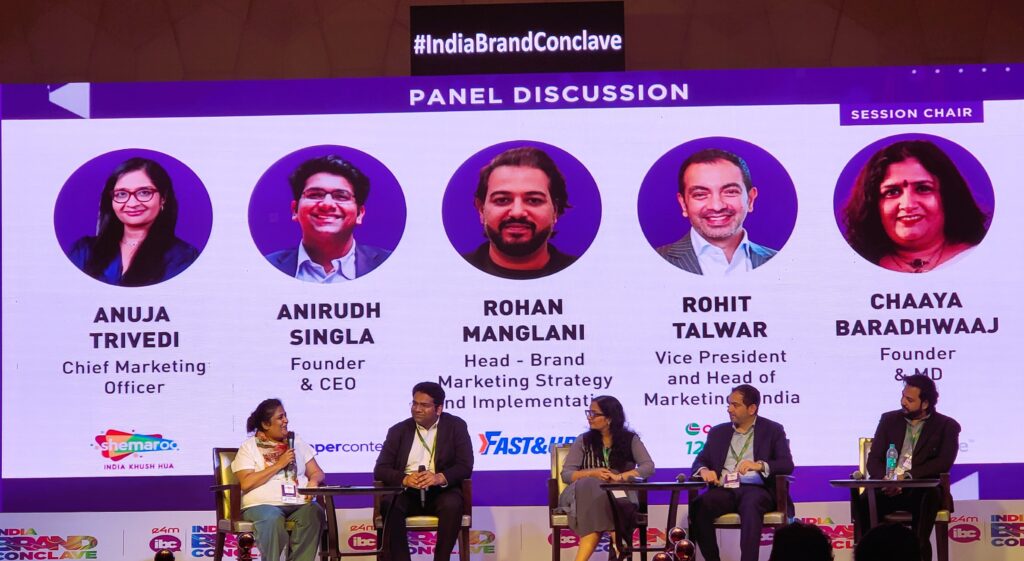
Bharadwaaj started the conversation by asking about the viewpoint on purpose among talks about technology and its significance. Talwar said, “It’s important to understand what purpose means, it’s a great way to kick start. But there are other elements of purposes; competence is another way to define purpose. For example, BMW, the ultimate driving machine, it’s really about functional competence. In addition to cause, there’s competence. And then there’s a third element, which is culture, so culture is really about intent.”
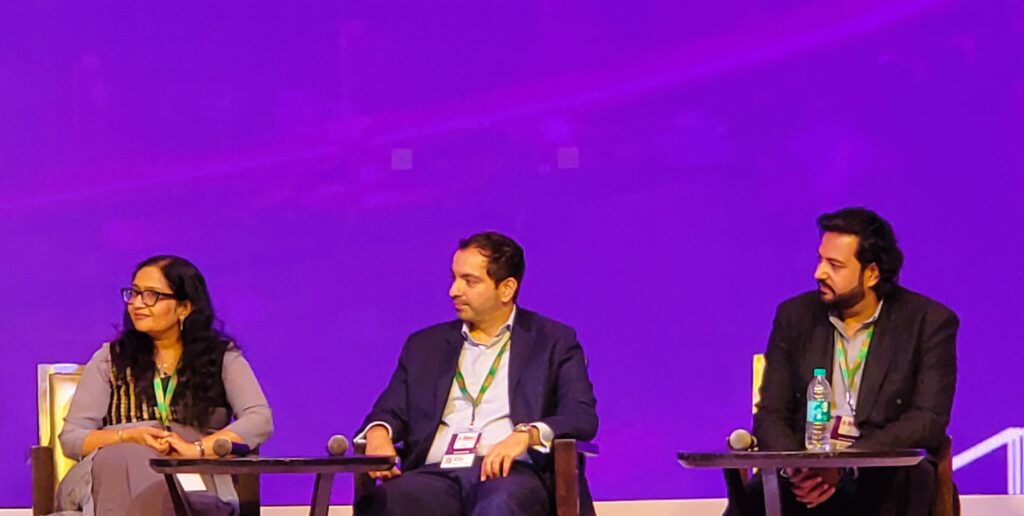
Bharadwaaj started the conversation by asking about the viewpoint on purpose among talks about technology and its significance. Talwar said, “It’s important to understand what purpose means, it’s a great way to kick start. But there are other elements of purposes; competence is another way to define purpose. For example, BMW, the ultimate driving machine, it’s really about functional competence. In addition to cause, there’s competence. And then there’s a third element, which is culture, so culture is really about intent.”
Manglani reiterated on Talwar and Trivedi’s insights and highlighted, “Purpose is so important for a brand to have, keeping your fundamentals, your values, your principles very intact, and moving forward with short-term goals or long-term goals. Our purpose was to see a more active and healthy India and to develop products that are more accessible to people and we have built on it.”
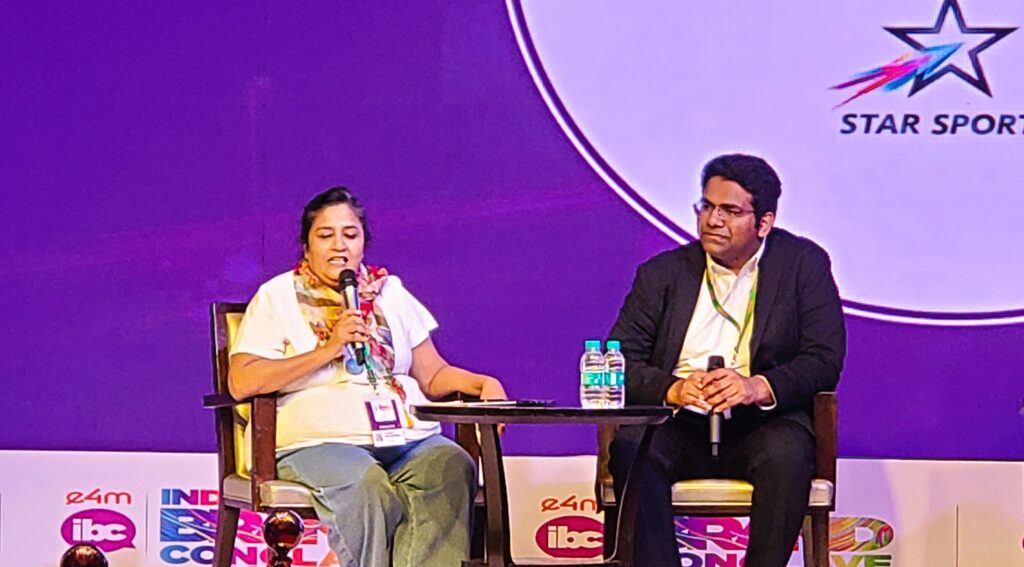
On technologies role and its collaboration with purpose, Singla said, “We work with a lot of CMOs and brand leaders, and the last 10 years have been very different. I feel every lead legacy brand or enterprise brand is right now wrestling with brand purpose because what happens is that brand purpose is built out of business goals. And the business goals and the consumers are changing dynamically, especially with digital. Fundamentally, what your consumer wants should drive your brand purpose. I think that the brand’s purpose has to keep reinventing. I’ve been hearing this one interesting thing, is the consumer able to think about your brand when they don’t have a need?”
Speaking on the junction of technology, Trivedi expressed her perspective by saying, “When we went from VCR to DVDs, it became a 50 million install base in India, and today, with all our content available on YouTube and Facebook, the kind of reach we look at as 5x. So, with every technology advancement, we’ve been able to jump in.”
Speaking on tracking the purpose, Talwar said, “Purpose has to be authentic. And for it to be authentic it has to be forward-looking customer-facing, but also lived and breathed by your employees and the people who work in the organization. Only then can it really come to life meaningfully. It’s something that has to be built consistently over time.”
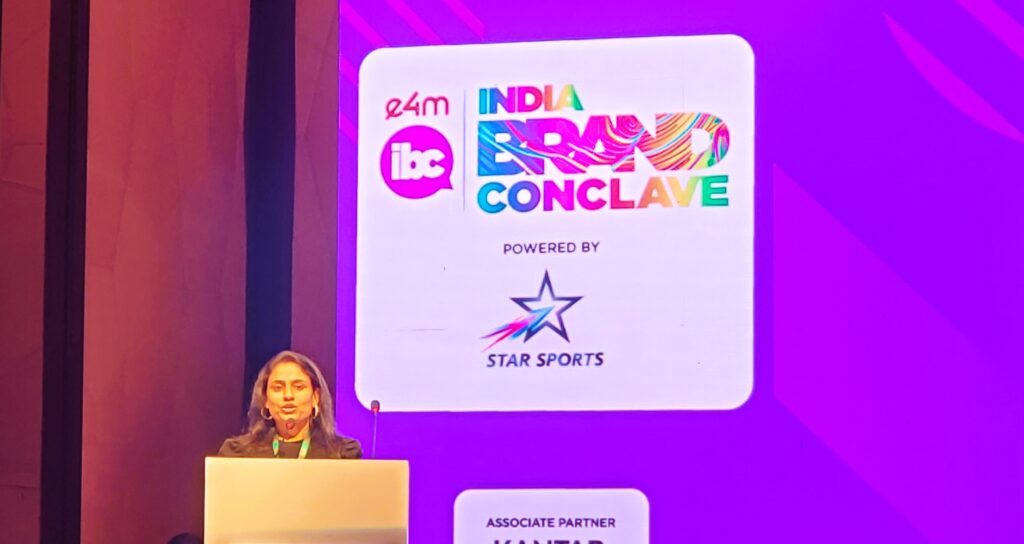
Special Address by BHAVANA MANDON: Country Manager – India for The LEGO Group on Brick By Brick: Captivating Generations With Play.
Since its debut 90 years ago, the LEGO brand has been hailed as the preferred toy brand for children worldwide. The LEGO Group’s goal is to inspire children to express their creativity while promoting and developing crucial 21st century abilities – emotional, cognitive, creative, and social – through their well-known LEGO system-in-play.
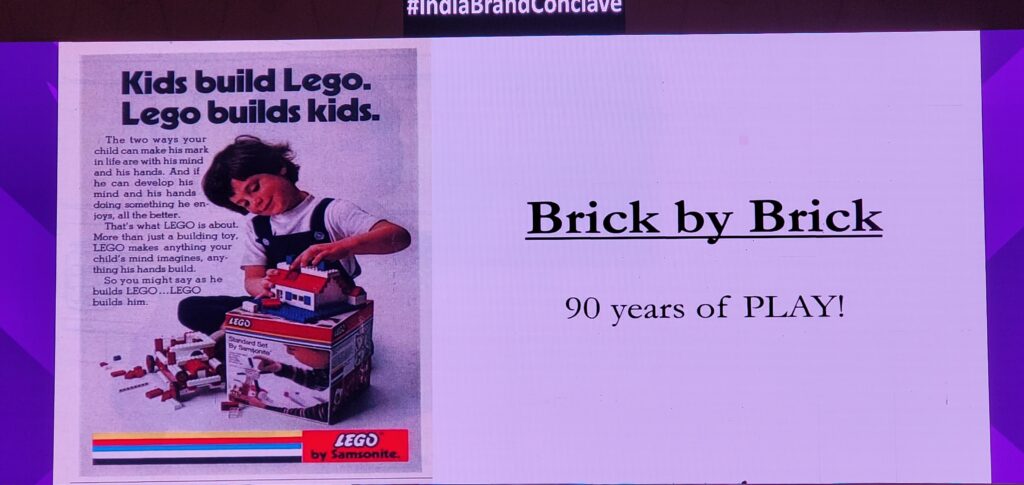
The LEGO Group’s history is a 90-year story of innovation and adaptation. The company started in 1916 as a small factory in Denmark producing wooden toys.
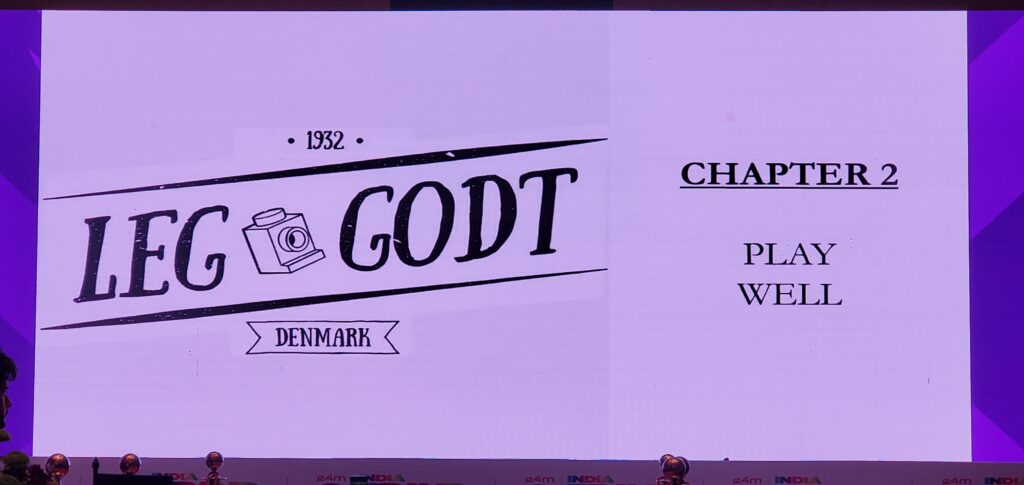
The name LEGO is derived from the Danish words LEgetøj (LEGOtoy) meaning “play well”.
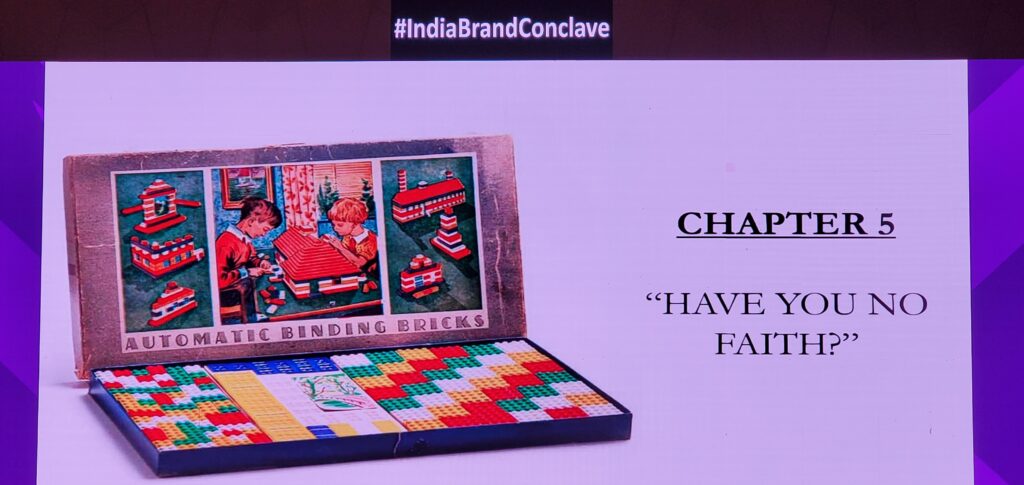
The Lego Group’s purpose has been to inspire and nurture future builders through the power of play. They are not only the world’s largest toy manufacturer, but also the most popular toy brand among customers. The journey in India was no different.
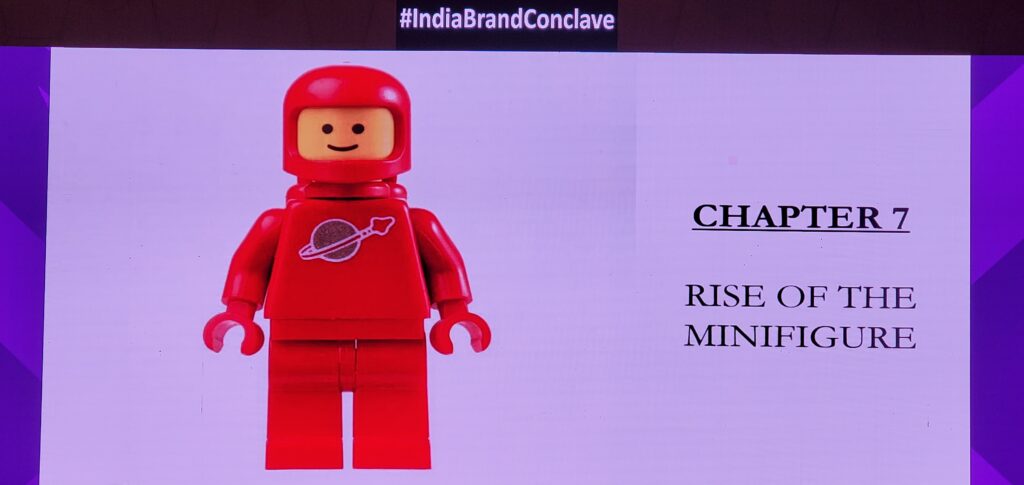
The LEGO system has long been considered the greatest platform for creative expression and problem solving. Children may not only imagine what they want to construct, but also build and rebuild. Experiment. Fail. Break the rules. Fail and try again. This is the cycle of human invention that underpins the LEGO system in Play. LEGO encourages individuals of all ages to play and use their imaginations to create a world of limitless possibilities.
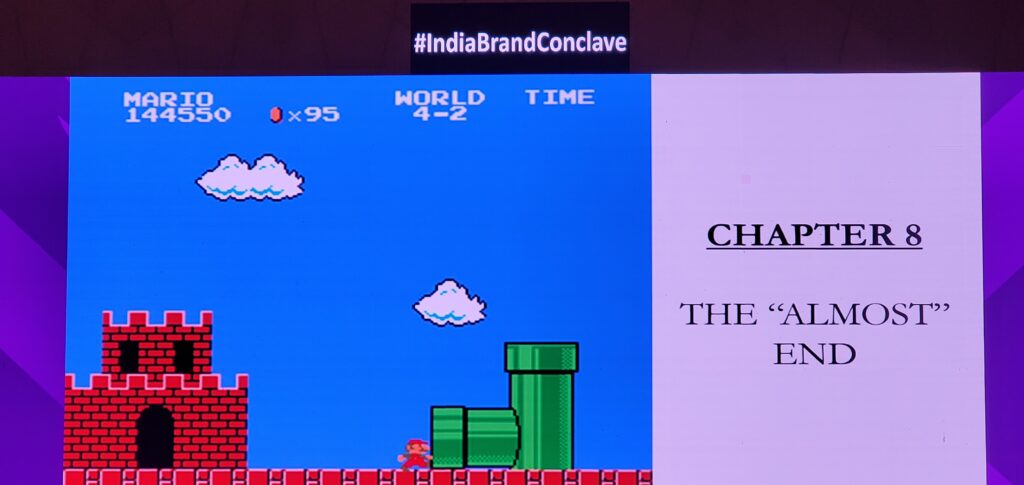
Initially, the company concentrated its efforts in the Indian market on raising awareness and familiarising people with the culture of construction toys and playtime for parents and children.
LEGO faced a crisis in the 1990s when children shifted their interest towards video games. The company responded by going back to basics, focusing on core LEGO bricks and minifigures, and creating new stories and characters through collaborations.
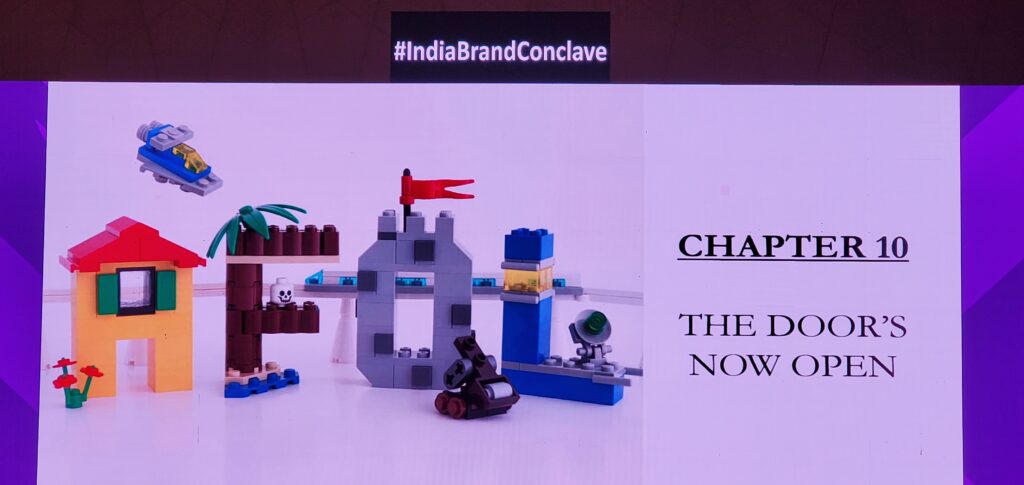
LEGO’s interaction with youngsters is twofold. When we want to communicate directly with children, we often use our own ecosystem, which includes our website and app. And everything we wish to give to youngsters on digital platforms through games is safety approved in partnership with the Totally Awesome Media Network. It is also critical that we provide the child with a positive initial play experience since this will attract the youngster and allow him to go to larger sets.
